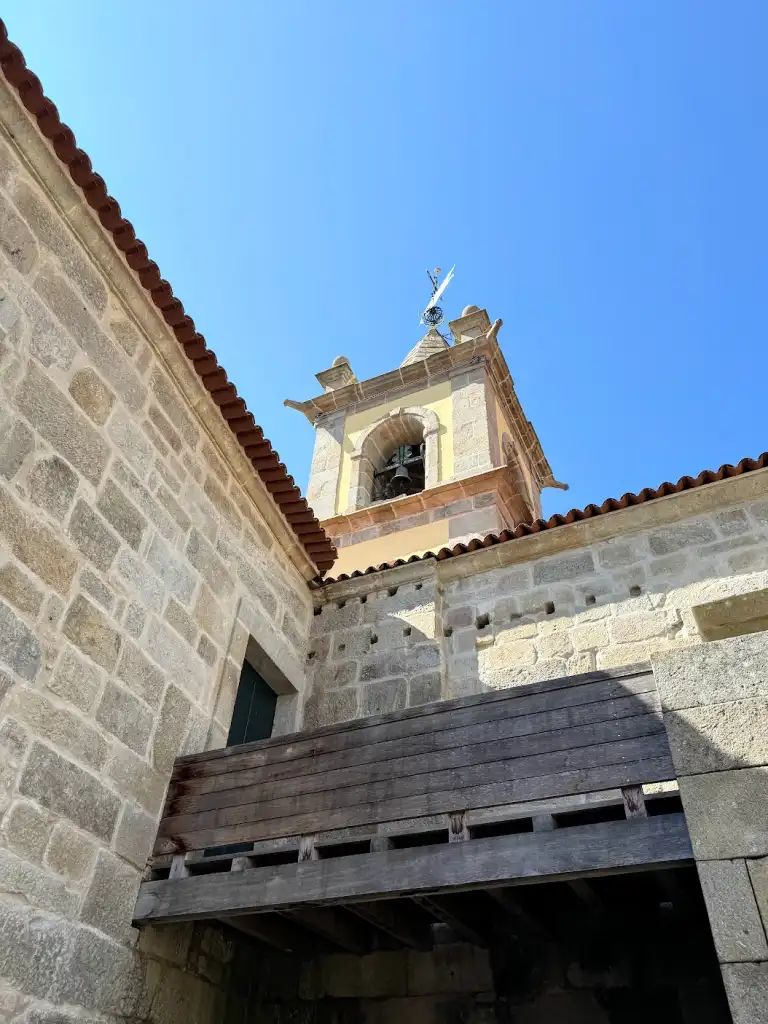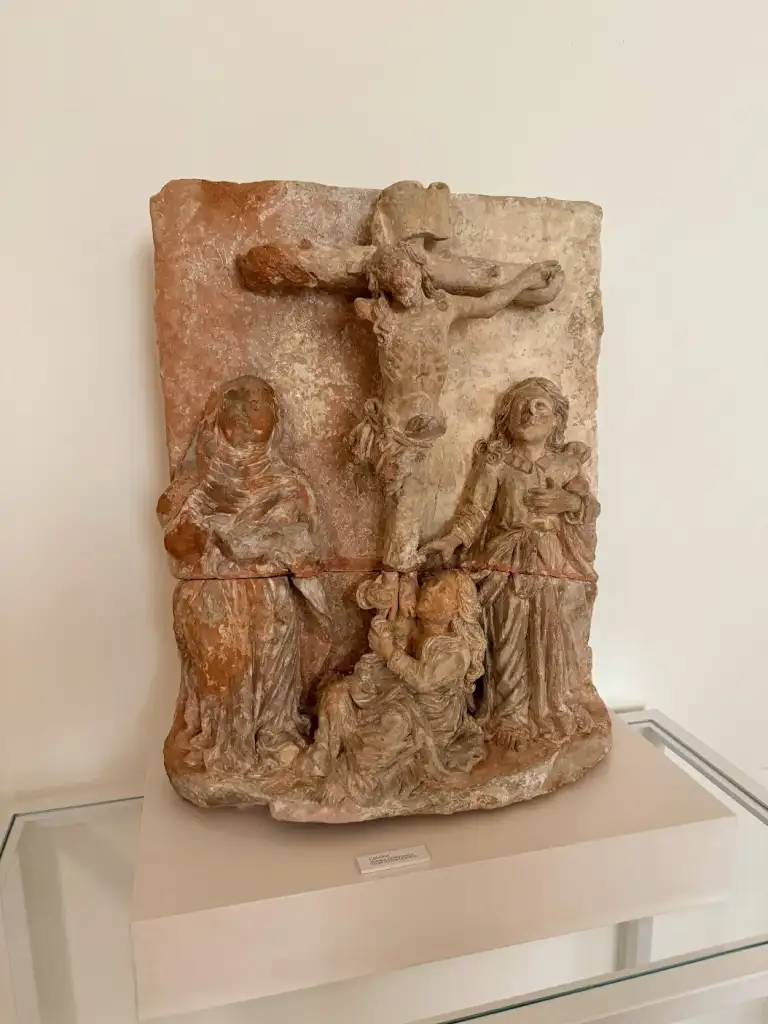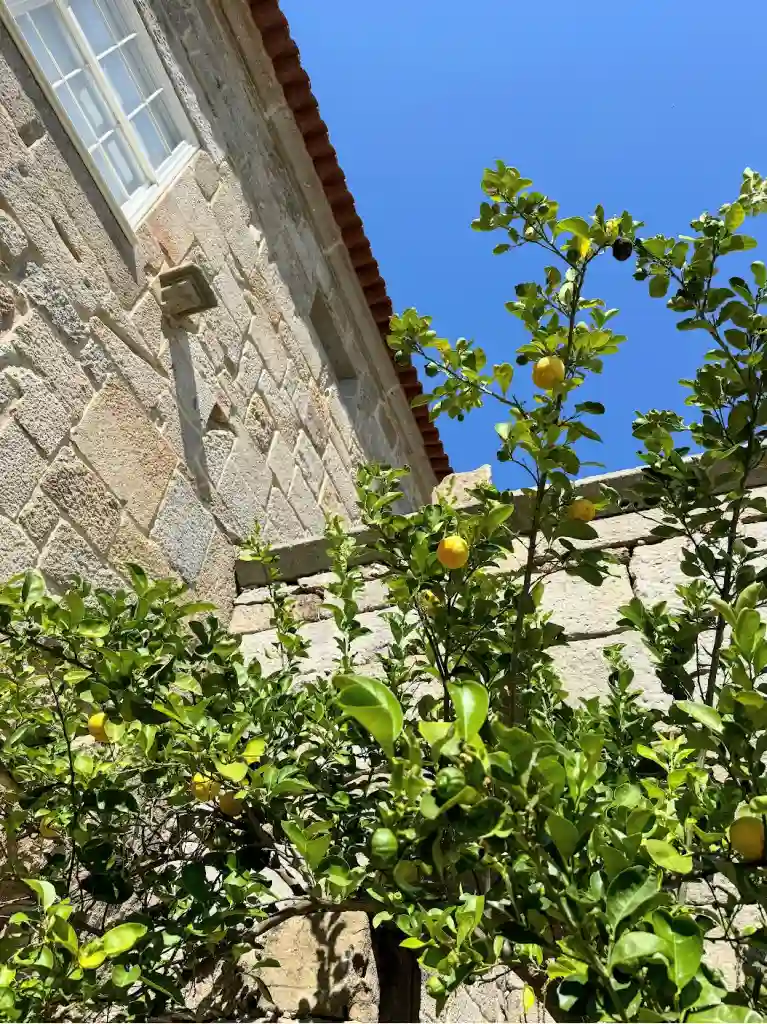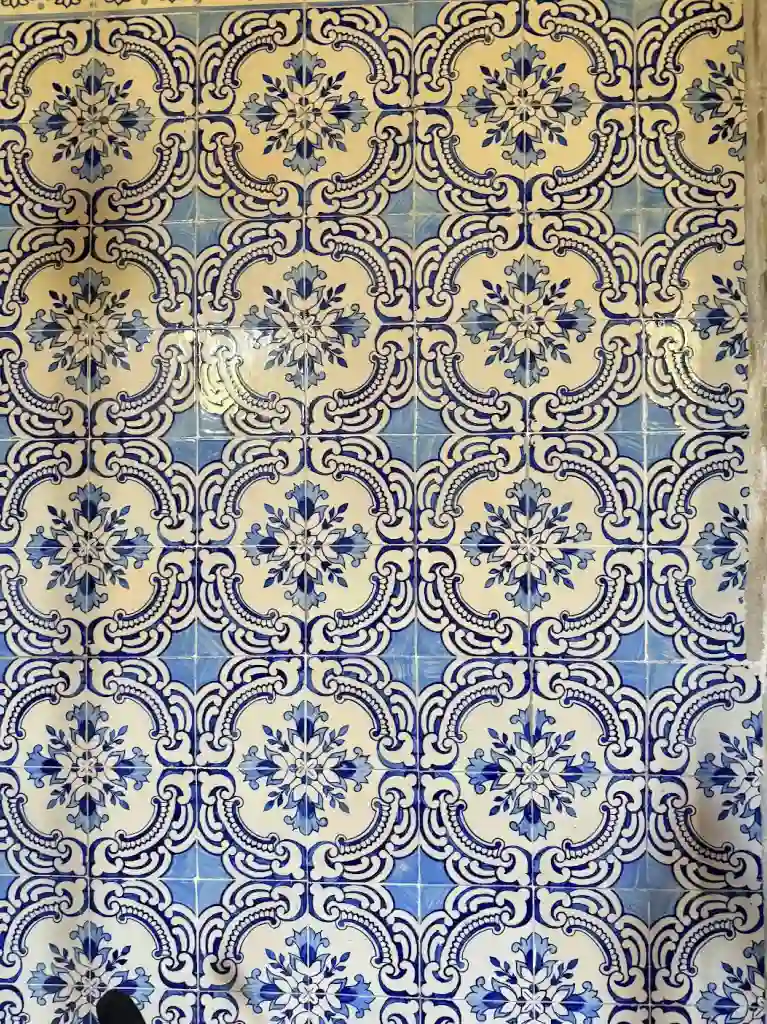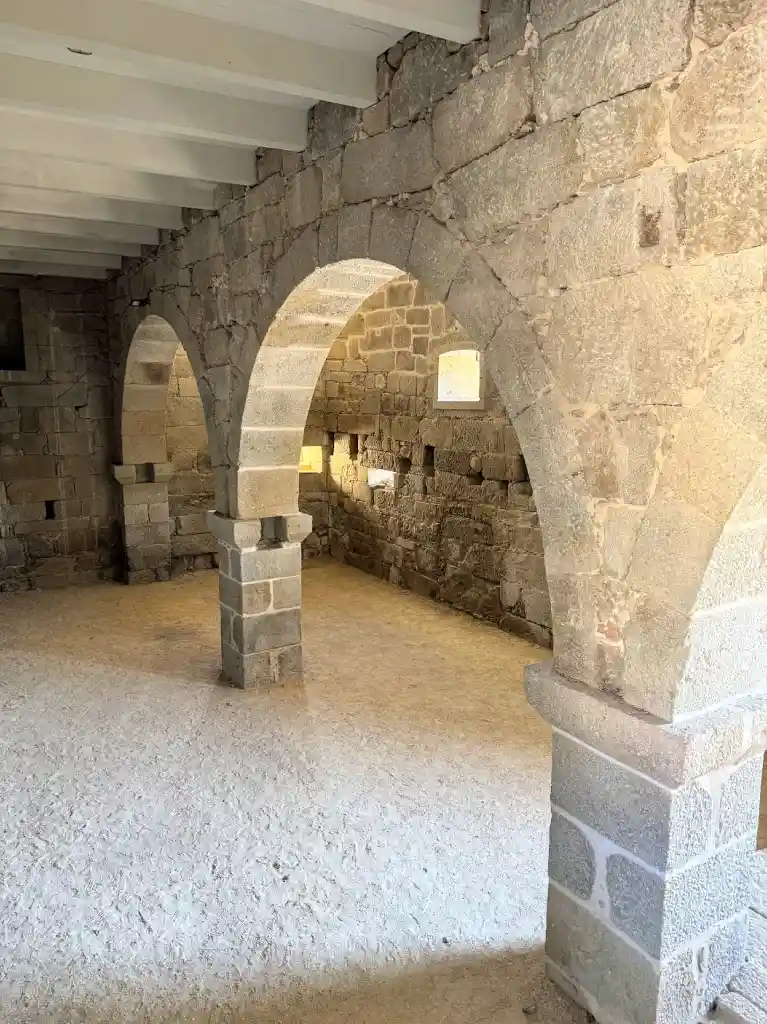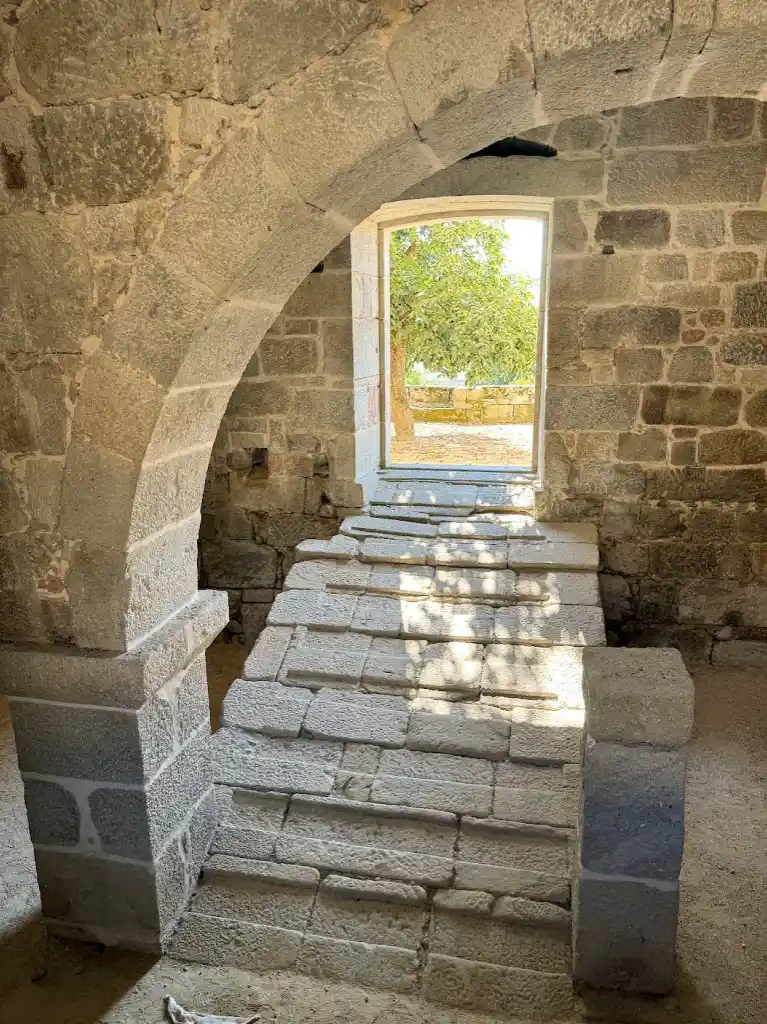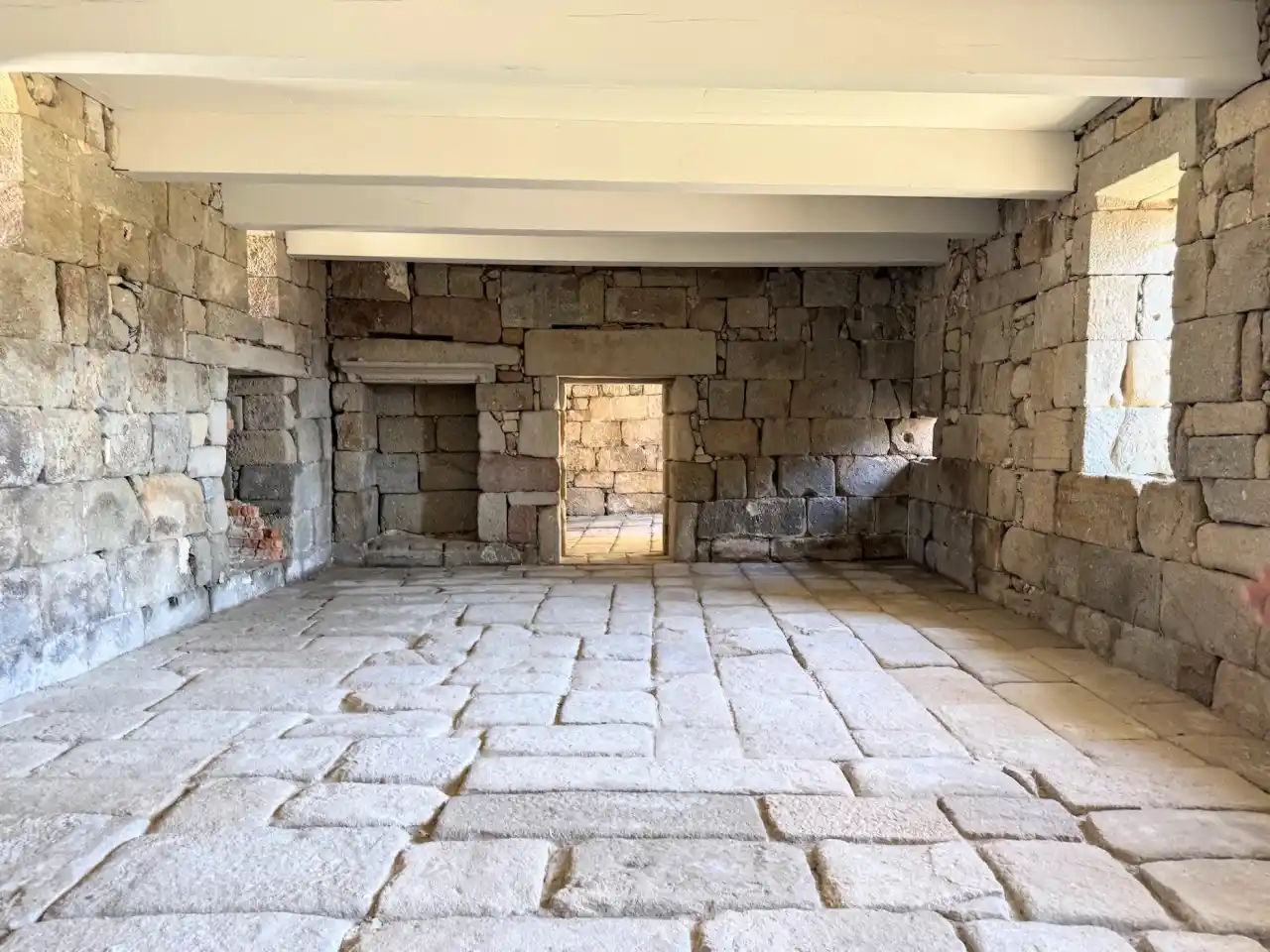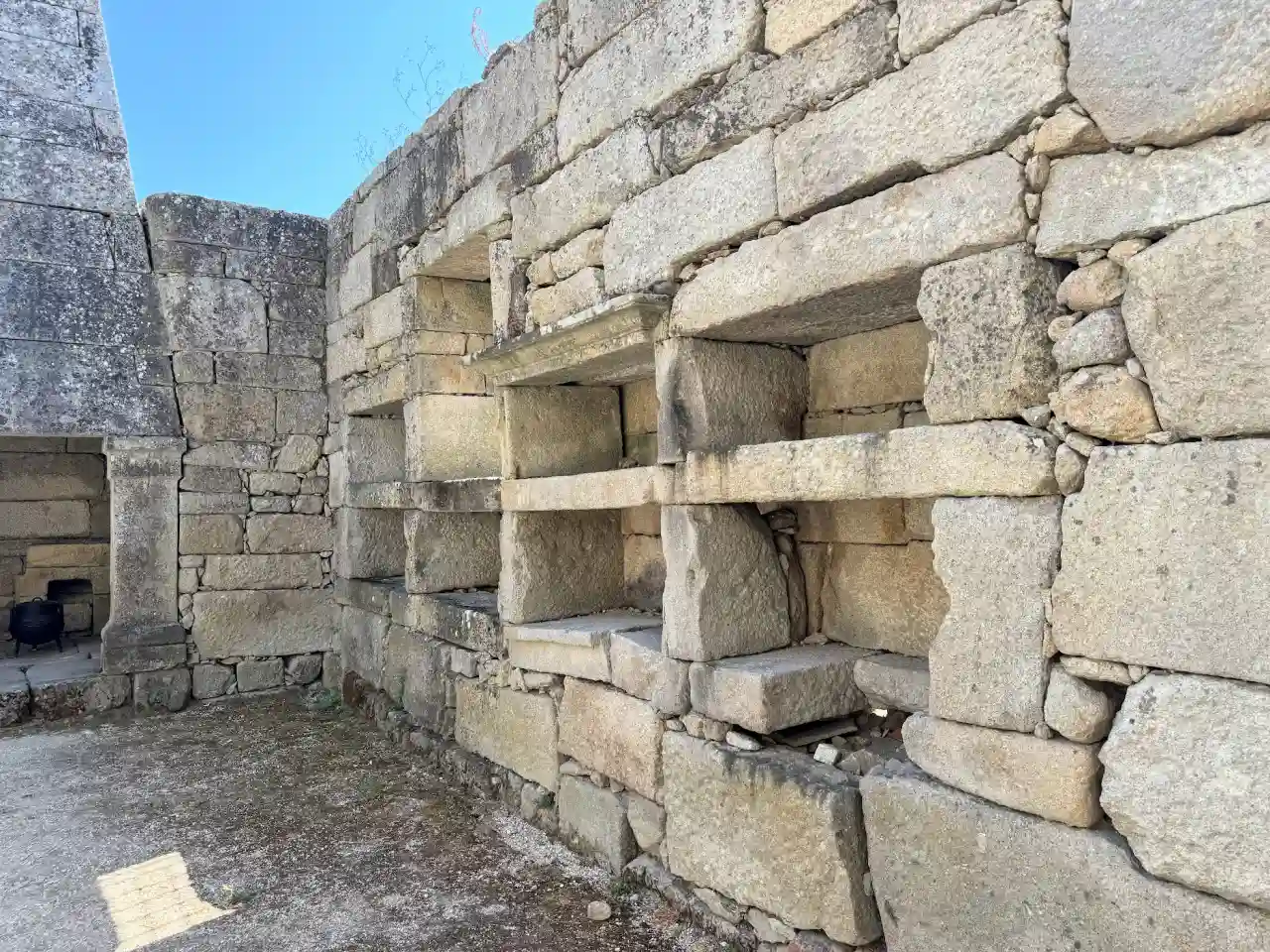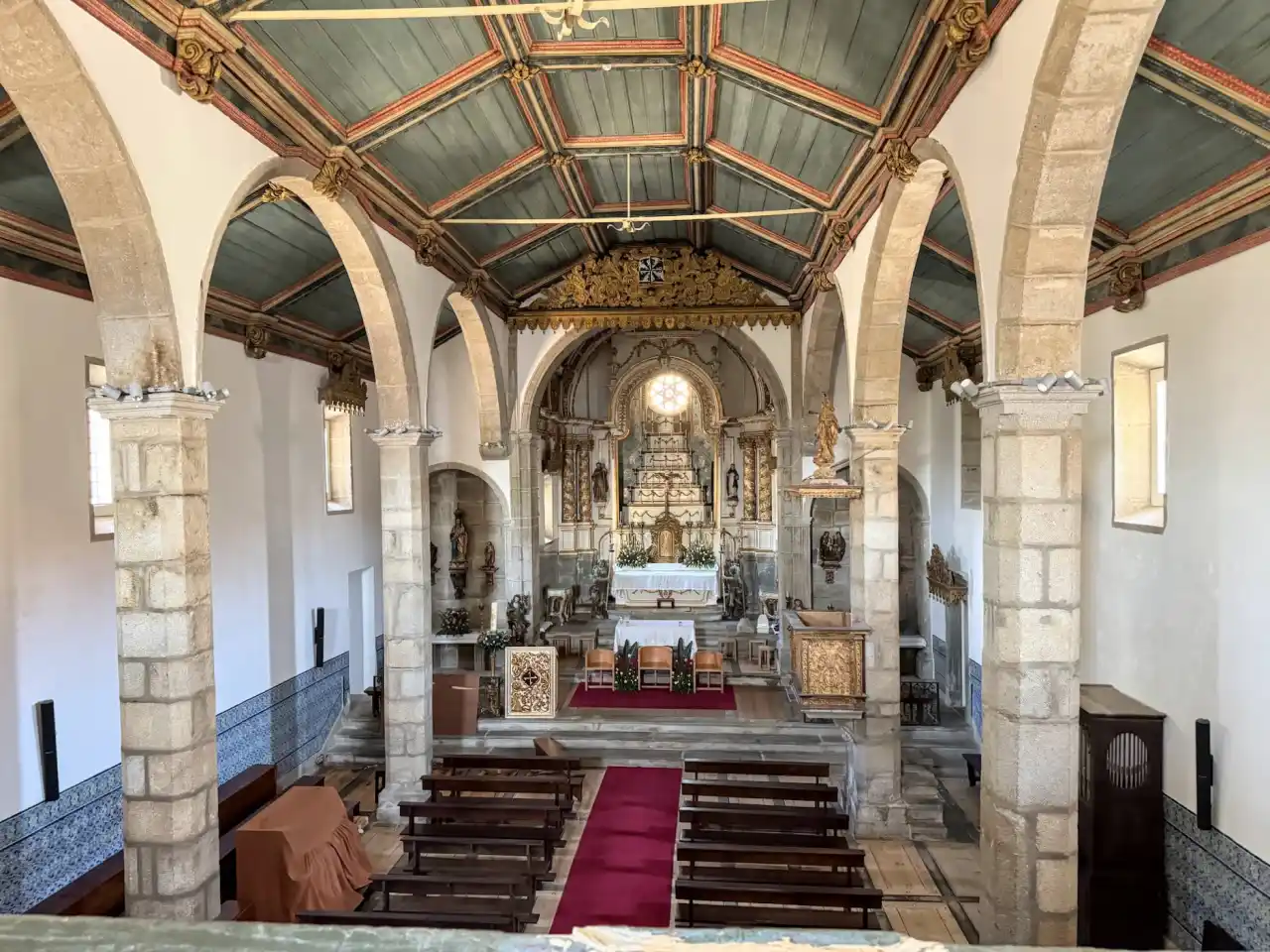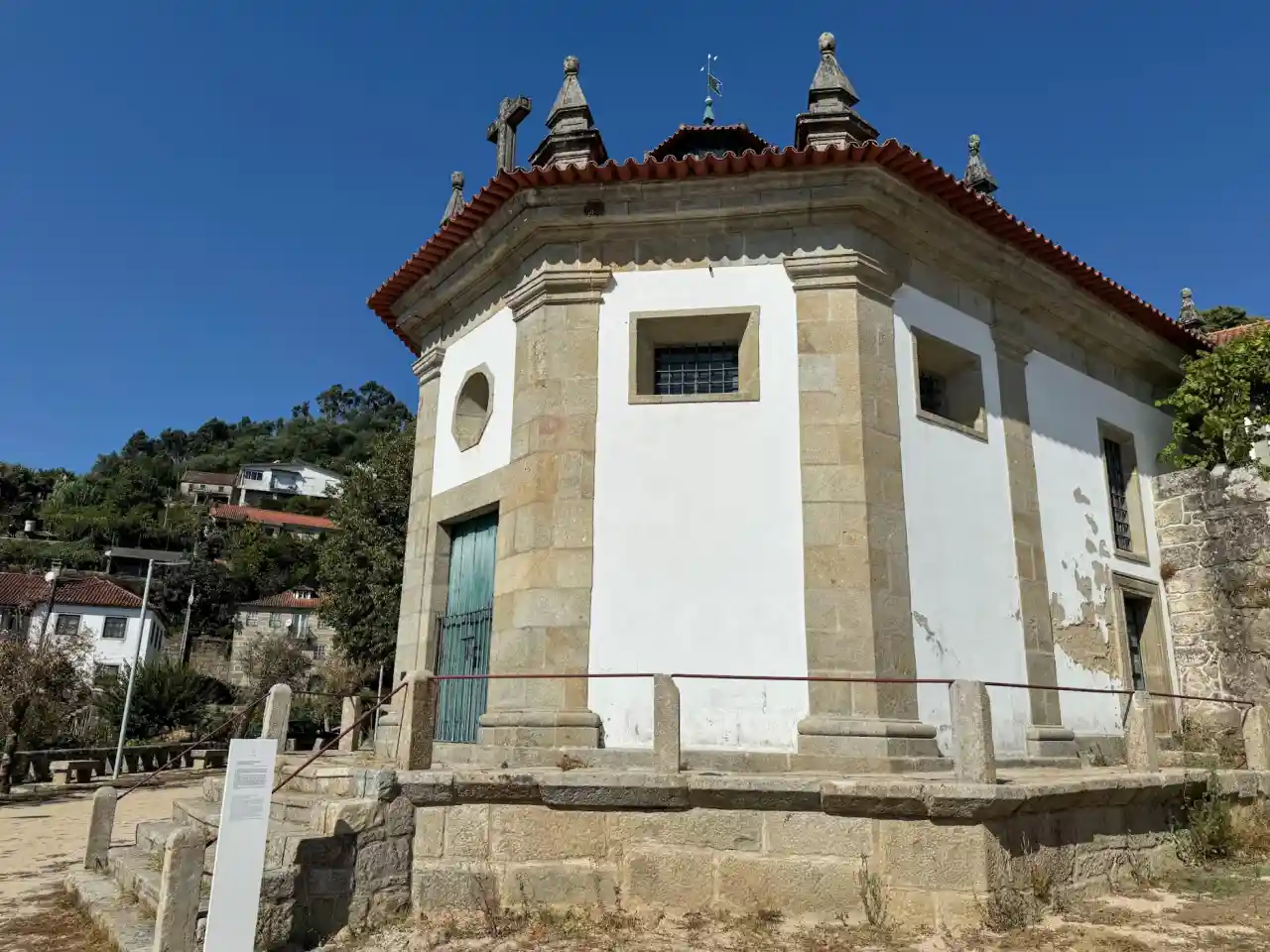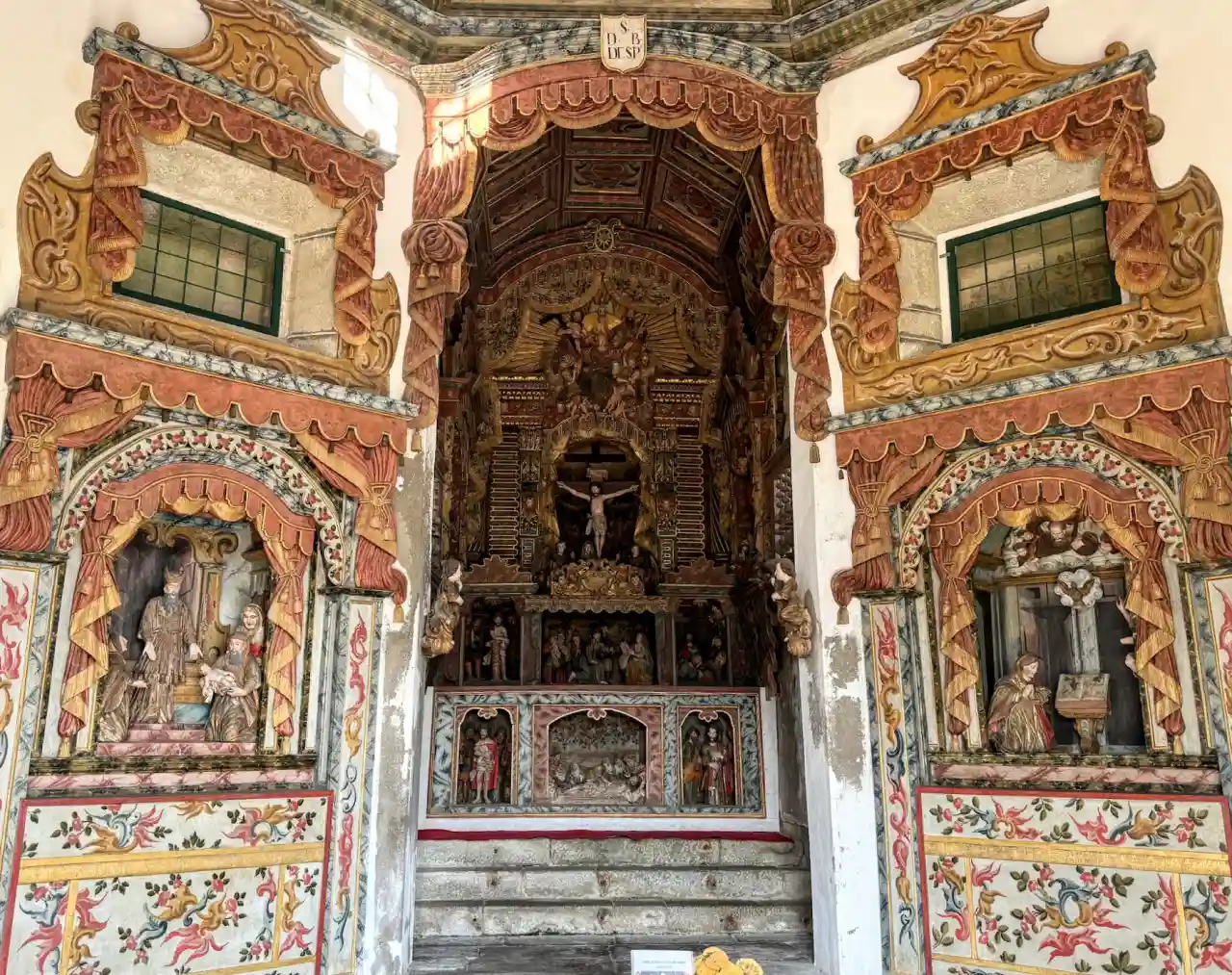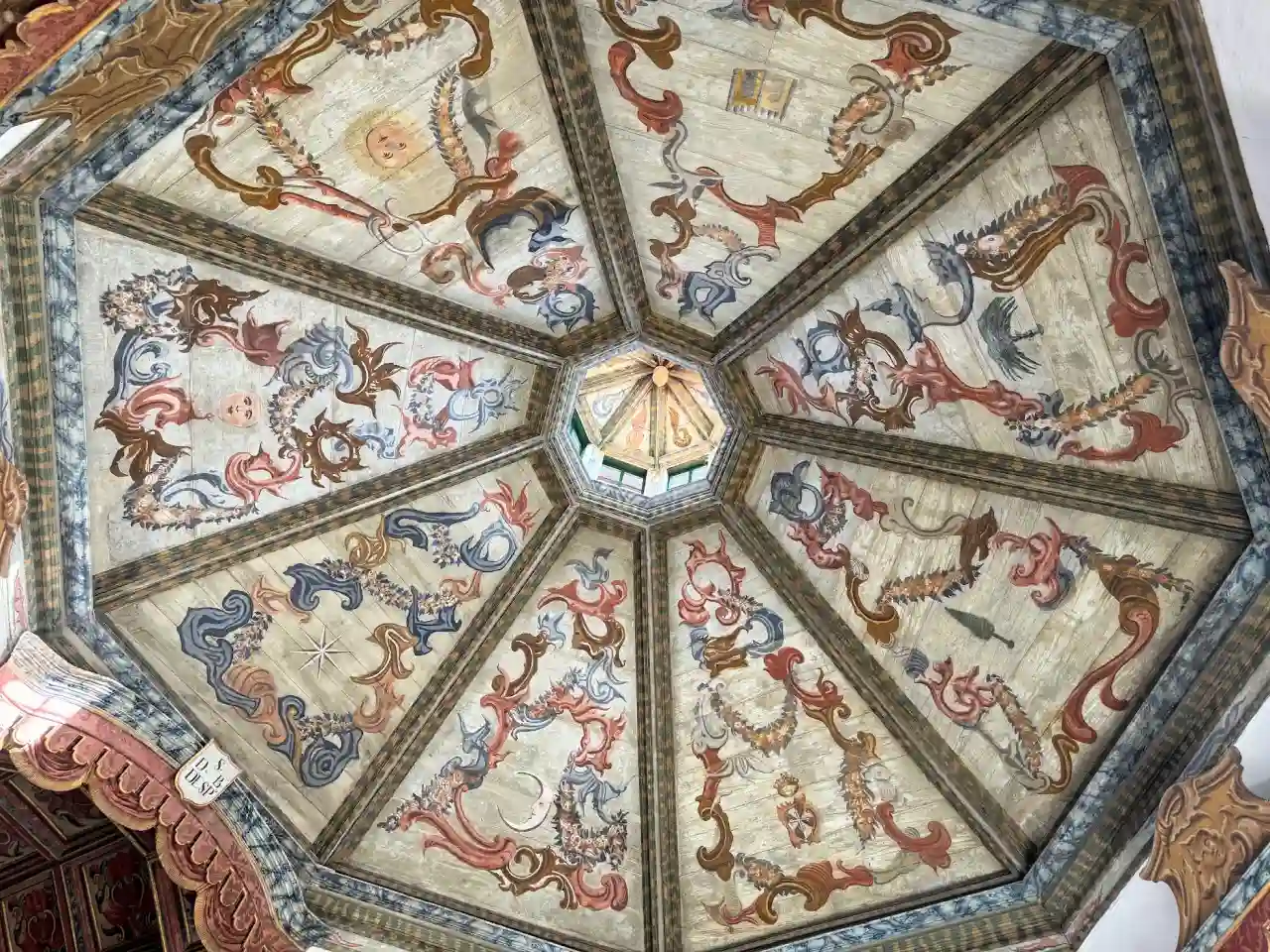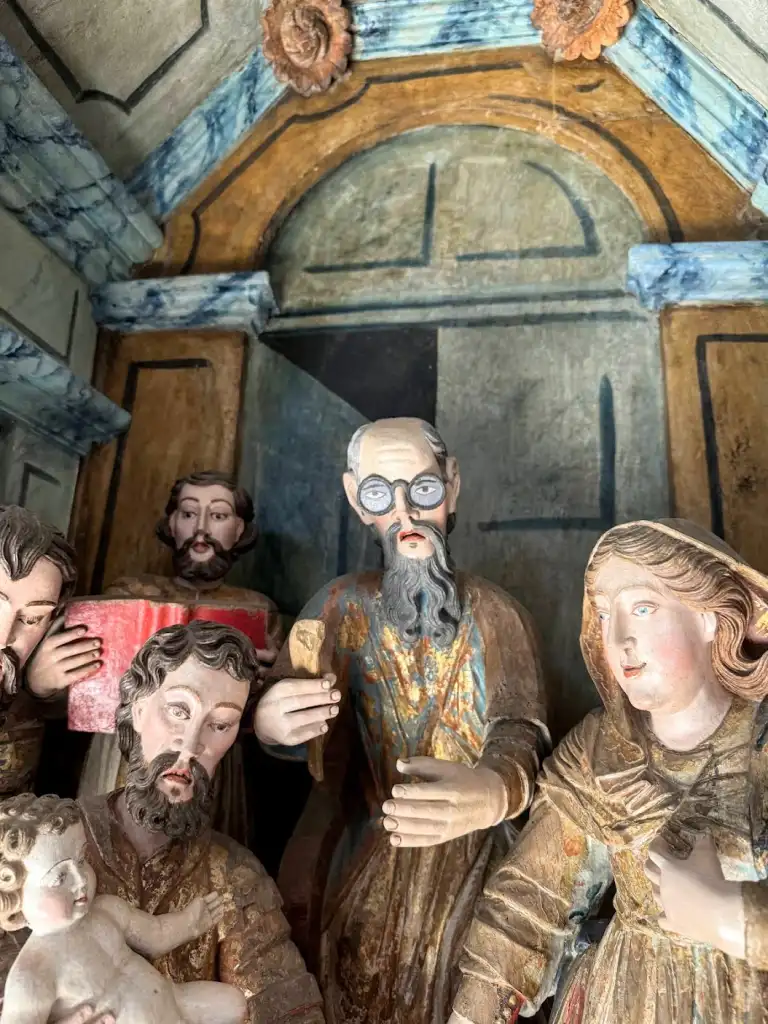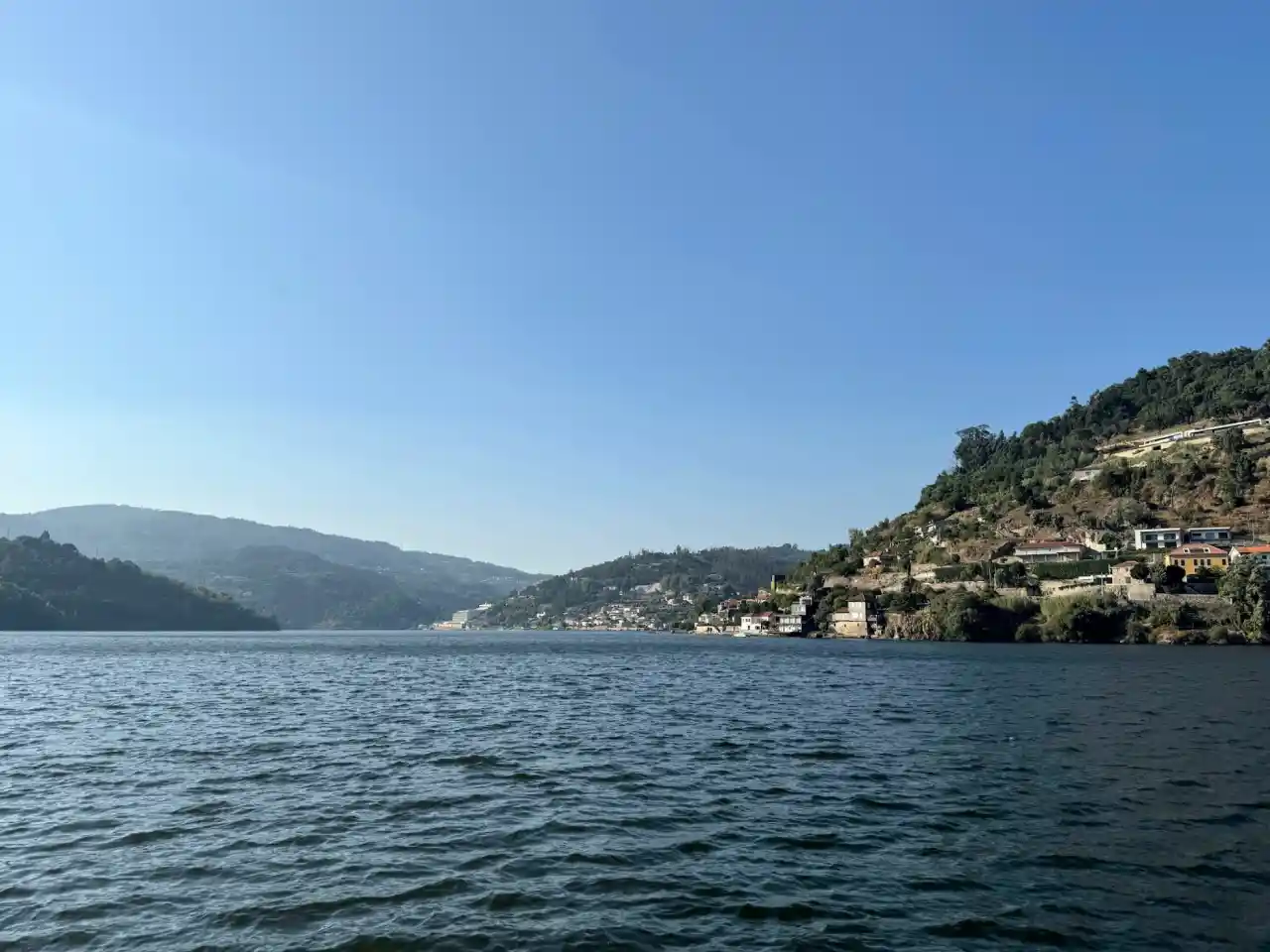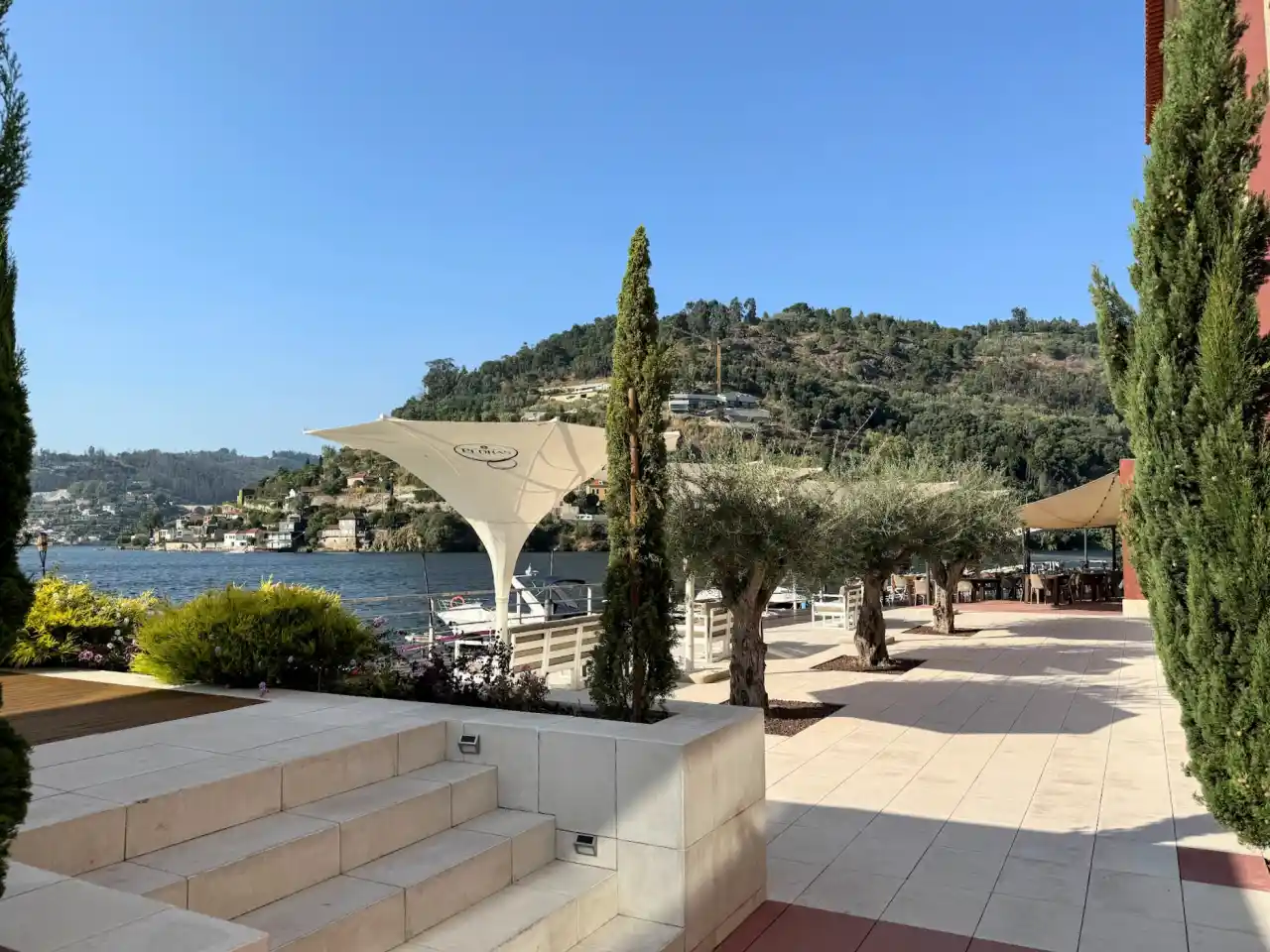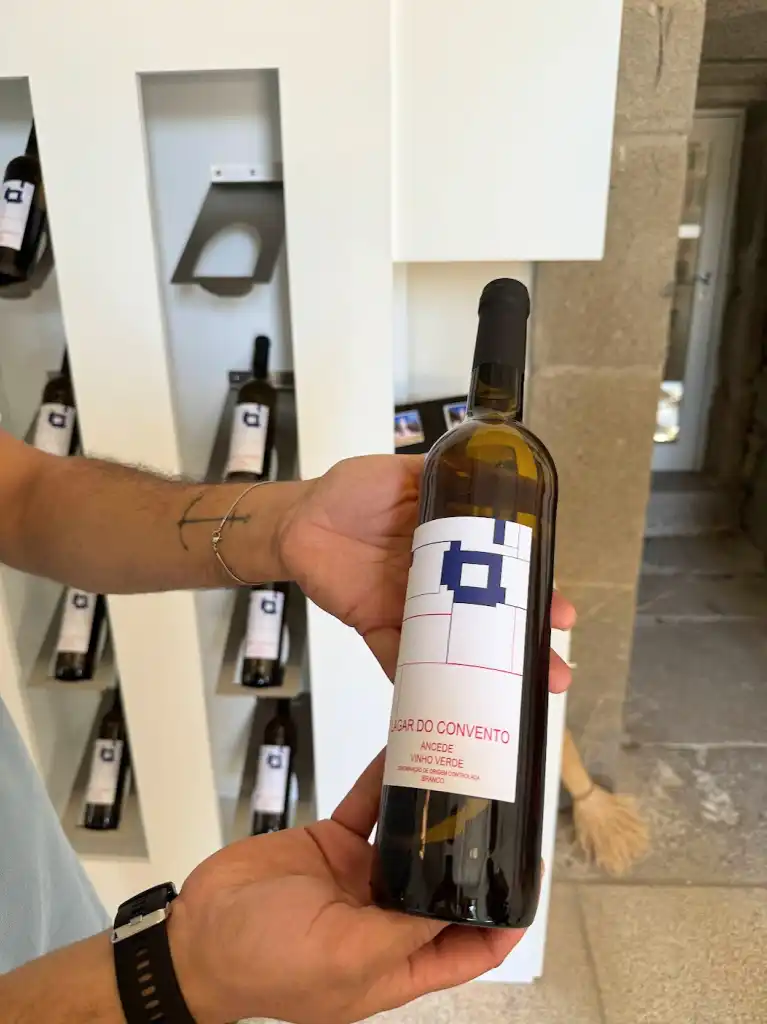The Monastery of Saint Andrew of Ancede in Baião was one of my favourite places to explore alongside the Rota do Românico in Portugal. Located on a scenic hill overlooking the Douro River valley, it’s a place witnessing centuries of history. The monastery is no longer inhabited by monks. However, today, it’s home to a lovely museum and visitors centre worth exploring.
Monastery of Saint Andrew of Ancede in Baião
Although the majority of other sites I explored alongside the Route of Romanesque (Rota do Românico) and the TRANSROMANICA in Portugal had better preserved features of that style, the Monastery of Saint Andrew of Ancede kept its medieval layout. Its location next to one of the main roads passing through the area, surrounded by gardens and vineyards, shows that it was the region’s important economic, cultural, and spiritual centre.
Watch my video about the Rota do Romanico sites in Portugal:
Monastery of Saint Andrew of Ancede History
Although the date of its foundation is unknown, the monastery already belonged to the Diocese of Porto in 1120. The monks of Saint Augustine order received the charter of privileges to the territory of Ancede from the first king of Portugal, D. Afonso Henriques.
The monks were wise in using the monastery’s great location above the Douro River, which connected the region with the nearby trading hub, the city of Porto. They produced wine and shipped it along the Douro River to Porto. Ships from there took them all the way to Flanders in today’s Belgium. They also prospered from leasing the properties, making a significant economic benefit for themselves.
In 1560, the monastery was integrated into the convent of Saint Dominic of Lisbon to gain royal support. Catherine of Austria, the regent of Portugal at the time, requested the switch, which was executed by Pope Pius IV. The Dominican monks started the reforms and rebuilt the monastery complex.
The monastery did very well until its extinction in 1834, when the religious orders were evicted from Portugal. It was sold in a public auction and bought by the Baron of Ancede. His family coat of arms is still on the North Gate.
The Baião City Council bought it from his family in 1985, and they still take care of the monastery complex. It was thoroughly renovated between 2020 and 2024 to accommodate the Monastery of Ancede Cultural Centre. The technical project was led by one of the most well-known Portuguese architects, Álvaro Siza Vieira, who is also an author of another fascinating building on the Rota do Romanico’s territory, the Church of Saint Mary in Marco de Canaveses.
⤷ Read more: 25 Beautiful UNESCO World Heritage Sites in Europe
Monastery of Saint Andrew of Ancede Architecture
When the Dominican monks took over the monastery in 1559, they demolished the old medieval church, leaving only its apse. Although built during the Middle Ages, not much remains of the monastery complex from the Romanesque period. The most important element from that time is the late Romanesque rosette on the back wall of the church. The walls of the apse were also built during the same time. The rest of the monastery complex was built between the 16th and 19th centuries.
⤷ Read more: Cultural Tourism Explained – How to be a Cultural Tourist
Monastery
Located next to one of the main roads overlooking the Douro River valley, the location was carefully chosen for this monastery. Once next to it, you can immediately see it was rebuilt several times throughout history. The visit to the monastery starts at its visitor centre, where you can join one of the guided tours. I did the same and enjoyed finding out more about this fascinating place in each room we visited.
Each stone of the monastery’s inner courtyard speaks about its past. While observing its walls, you can spot so many different time periods, preserving centuries of its rich history.
From the courtyard, we entered the former monastery’s storage. The monks owned the land around it where they grew various produce, grapes being the most important. They kept fruit, vegetable and wine barrels in storage. I visited on a warm day, and it was significantly cooler inside of it, showing its location was picked wisely. It was interesting to spot some details inside of it, like, for example, the platform for the cattle. They used it to get inside so workers could quickly load the cargo on the carts.
After the manufacturing area, we visited the former kitchen and dining room. You can still see how well organised the monks were. The food was prepared in the kitchen and brought to the dining room through the small windows. It was interesting to learn they still occasionally organise dinners and various events in these spaces, bringing them to life that way.
The upper floors of the monastery building are turned into an exhibition space today. There, you can see one of the monastery’s most important possessions, a triptych made by the Flemish master Joos van Cleve in 1530, showing its trading connection with Flanders. You can also learn more about its architecture and history there. Temporary exhibitions worth visiting are also regularly organised in this area.
Church
The monastery was home to two churches during the Middle Ages. Later, they were merged into a single building, and the present church was built in 1689. It’s a large three-nave building with a wooden roof. The lover parts of its walls are covered with typical white and blue decorative tiles.
The sacristy is a treasury of artefacts showing the sacral significance of this place. It’s home to a collection of Baroque sculptures made between the mid-16th and late 18th centuries. You’ll also see some relics and a unique wooden cross.
⤷ Read more: 20 Most Iconic Churches in Europe
The Chapel of the Lord of Good Delivery
The Chapel of the Lord of Good Delivery was the most fascinating part of the Monastery of Saint Andrew of Ancede. With its fantastic sculptural interior decor, it’s an architectural Baroque gem unique in a wider European context.
The octagonal chapel was built in the large courtyard in 1731. Simple from the outside, its interior mesmerises once inside. It has six altarpieces within its nave showing a lavish sculptural program. Observing the wooden statues makes you feel like you’re at the theatre, seeing staged scenes with characters that will start moving any moment now. The scenes represent stories from the Life of Mary and Christ’s childhood.
The main altar doesn’t cease to amaze, representing all the glory of Baroque sculpture. It depicts scenes from the Passion of Christ, with the Assumption and the Coronation of the Virgin shown at their highest points.
What else to see close by
Rota do Românico sites
The Monastery of Saint Andrew of Ancede is one of the sites on Rota do Românico, the Romanesque route in the northern Portugal. There are many more medieval sites alongside that fascinating route worth exploring. You’ll find the Church of Saint Mary Major of Tarouquela and the Memorial of Sobrado in Castelo de Paiva close by. If you’re interested in exploring more of these sites, read my article about the Romanesque route in Portugal below.
⤷ Read more: Travelling Alongside the Rota do Romanico in Portugal
Douro River
The Douro River was crucial for the monastery’s economic growth, and it still makes an essential connection between this region and Porto. However, it’s also surrounded by beautiful nature, fantastic vistas, and picturesque places to visit. A nice place to go after your visit could be the Hotel Porto Antiguo’s terrace, from where you can enjoy a beautiful view of the river and the hills surrounding it.
Bello’Giro activities
If you’d like to spend the rest of the day more adventurously after visiting the monastery, check out some of Bello’Giro’s activities. They offer water scooter rides on the Douro River and buggy rides at Aboboreira Mountain. I tried both during my visit and enjoyed them a lot. Check out their website for more info.
Tips for visiting the Monastery of Saint Andrew of Ancede
⤷ How to get there – The best way to get to the Monastery of Saint Andrew of Ancede is by car. You’ll need around one hour and twenty minutes to get there from Porto.
⤷ Join a guided tour – It makes such a difference to visit this fascinating place on a guided tour. They organise several tours throughout the day, so be sure to check their time and join one of the tours during your visit.
⤷ Buy the Monastery’s wine – This institution continues the tradition of producing wine from the grapes growing in the vineyards surrounding the monastery. You can buy an exquisite Vinho Verde wine at the Visitor Centre’s shop. I tried some and liked it very much!
There is still so much to explore about this beautiful place. Visiting the Monastery of Saint Andrew of Ancede offers a lesson in history while exploring a beautiful nature and fascinating history of northern Portugal.
I visited the Monastery of Saint Andrew of Ancede during the press trip organised by the TRANSROMANICA, Rota do Românico and their partners. Many thanks to all of them for organising this trip for me. As always, all opinions are my own.
Read more about the TRANSROMANICA sites in Europe:
Exploring the Transromanica sites in Slovakia
A Guide to Spišská Kapitula and Spiš Castle in Slovakia
Exploring the Medieval Monasteries in Serbia
Cover photo credit: Câmara Municipal de Baião


